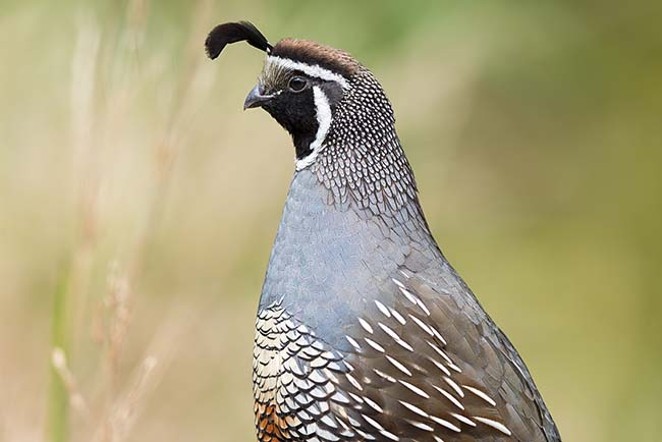The outside thermometer is launching into the red zone this week, and like us, our wildlife will be seeking respite. We know that heat can have concerning health impacts, but not just for us upright, two-leggeds. Everyone suffers in extreme heat—insects, mammals and birds, as well as those with roots holding them in one place, plants.
The animals and plants of Central Oregon are indeed adapted to some heat extremes. But last year, we beat all records when we catapulted into the triple digits of 115 degrees. And, here we are again in the 100s. We can do a lot to help our flighted friends who frequent our yards and the others who hang out closer to the ground.

Our yard birds do have physiological adaptations that help them survive high heat. Depending on the species, birds' average temperatures run between 101-106 degrees. When the thermostat rises and the temps begin to approach their internal temperatures, they risk heat exhaustion, stress and stroke just like the rest of us.
Because birds don't sweat, they have adapted different strategies for cooling off. Mainly, they pant. Cooling is done by air passing across the wet tissues in the mouth and throat, called evaporative cooling. They flutter the skin at the front of the neck to enhance this form of cooling. To release heat from their naturally warm armor of feathers, they have this amazing ability to lift each individual feather due to muscles at the base. Those scaly, bare legs also help jettison heat.
However, panting and exposing the skin to air can lead to dehydration if the lost moisture is not replaced quickly. This is another way high heat kills. Having bird baths, water features, misters or just simple trays of water out can be life-saving for many species. Keep those baths clean, though, and with fresh, cool water. Move them to the shade. A single mist sprayer or a soaker hose set on medium is water-conservative, but birds love to fly through and stand in the spray.
Birds excel at adjusting their behavior to fit the circumstances, yet when the weather hits the true extremes, they can really suffer. Birds will tend to focus their activities in the cool of the morning and late afternoon. They will seek shelter in the dense shrubs or deep canopy of the trees mid-day. Our native plants—shrubs, grasses, and trees—are Olympic-scale winners at this.
Birds restrict their food-seeking and foraging activities, which helps reduce their internal temps, but they go hungry. So, keep those feeders filled. Sunflower hearts with no shell pack a nutritional punch and are quick to eat. Put millet on the ground for the doves and quail and hang whole sunflower and Niger thistle in feeders that are easy to clean. Stop with all suet; it will go rancid, and the soft oils contaminate bird feathers, impairing their ability to stay cool now and warm in the winter.

Other wildlife can also use a quick dip or drink, so soak the rocky places where the frogs hang out and get trays on the ground for the bunnies. Plant trays work great for the low-grounders, but anything that holds water works. Place rocks in them so everyone can safely get out. The deer will be grateful for a small tub of any kind or stock tank if you have one. Give plants a good soaking early in the day to help them and the insects that will be harboring in the safety of their foliage. If you have land, putting out trays and soaker hoses for the birds who don't like the commotion of our homes can help them, too.
Disease is always a concern when you have congregations of animals in one place, especially if they are eating—or drinking—from the same vessel. Keep the feeders and the baths clean, and if there are any signs of illness, follow proper protocols for disease prevention. Finally, if you have birds in boxes, a tent canopy set over and up away from the box can lower the temp inside significantly. Boxes should always be larger and have ventilation these days due to heat.
Don't be surprised if you have some unique visitors this week, along with the many flighted neighbors who will no doubt seek your generous offerings.
— Elise Wolf directs Native Bird Care avian rescue in Sisters. She writes on birds in the Nugget News and the Source, as well as on her blog, nativebirdcare.org and Facebook page.







